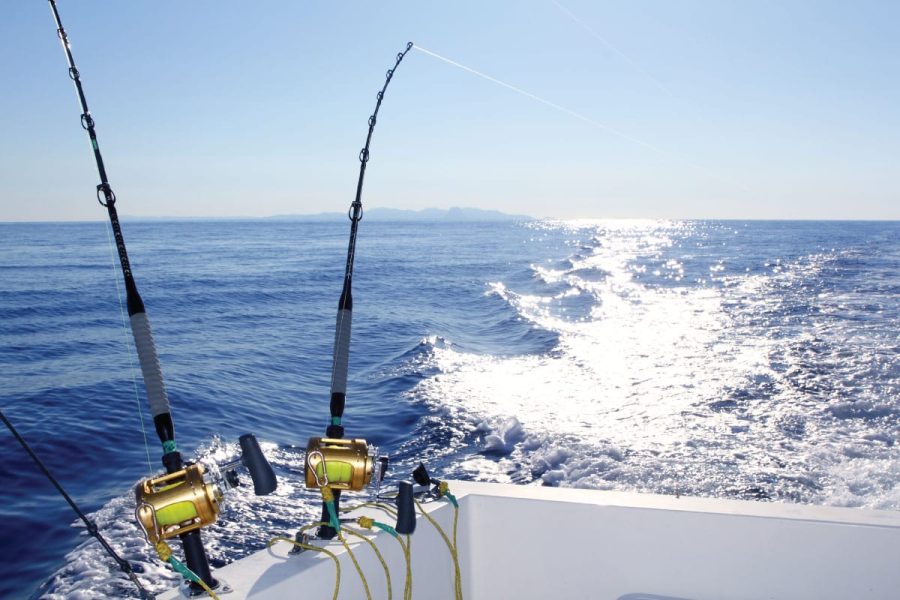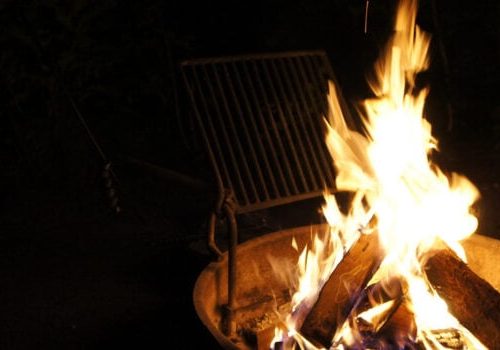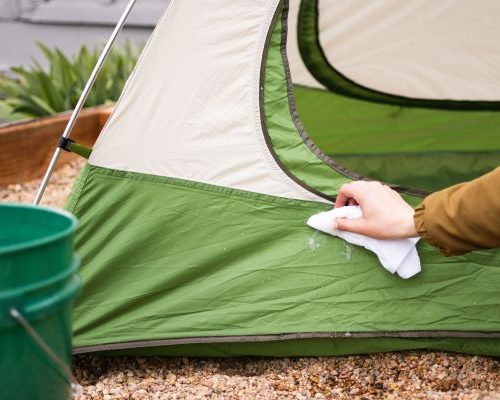Fishing in the ocean offers an unparalleled experience, blending the thrill of the catch with the serenity of open waters. Whether you’re a seasoned angler or a novice looking to try your luck in deeper waters, understanding the nuances of ocean fishing can significantly enhance your success. This guide will cover essential tips to help you make the most of your ocean fishing adventures.
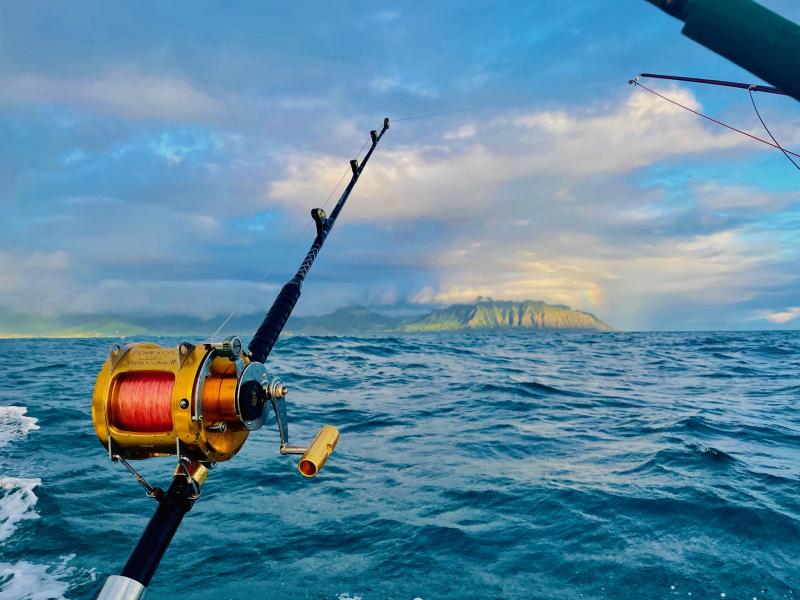
1. Know the Basics
Understanding the Types of Ocean Fishing
Ocean fishing can be broadly categorized into several types, each requiring different techniques and equipment:
- Deep-sea Fishing: Targets large species like marlin, tuna, and swordfish, typically in waters over 100 feet deep.
- Surf Fishing: Involves fishing from the shoreline, targeting species such as striped bass, redfish, and flounder.
- Bottom Fishing: Focuses on catching fish that live on or near the ocean floor, such as snapper, grouper, and halibut.
- Trolling: Entails dragging baited lines or lures behind a moving boat to catch species like kingfish, mackerel, and wahoo.
Licensing and Regulations
Before you head out, ensure you have the necessary fishing licenses and are familiar with local regulations. These can vary by location and species, including size limits, bag limits, and seasonal restrictions. Checking with local authorities or online resources can help you stay compliant.
2. Essential Gear and Equipment
Rods and Reels
Choosing the right rod and reel depends on the type of fishing you plan to do:
- Deep-sea Fishing: Heavy-duty rods and reels capable of handling large fish and deep waters.
- Surf Fishing: Long rods (9-12 feet) designed to cast far beyond the breaking waves.
- Bottom Fishing: Medium to heavy rods with sensitive tips to detect bites on the ocean floor.
- Trolling: Robust rods and reels with high line capacity and drag systems to manage fast, powerful fish.
Line and Tackle
- Fishing Line: Use braided lines for deep-sea and bottom fishing due to their strength and sensitivity. Monofilament lines are suitable for surf fishing.
- Hooks and Baits: Choose hooks and baits based on the target species. Live baits like shrimp, squid, and minnows are versatile, while artificial lures can be effective for trolling and surf fishing.
- Weights and Sinkers: Necessary for bottom fishing and surf fishing to keep your bait at the desired depth.
Safety Gear
- Life Jackets: Essential for all passengers on the boat.
- First Aid Kit: Includes bandages, antiseptics, and other emergency supplies.
- Communication Devices: A VHF radio or satellite phone for emergencies.
- Sun Protection: Sunscreen, hats, and sunglasses to protect against harmful UV rays.
3. Techniques for Successful Fishing
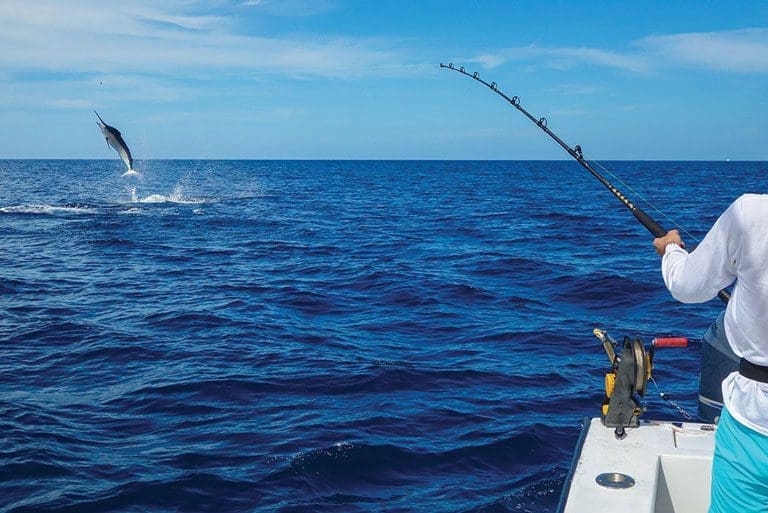
Understanding where to find fish is crucial:
- Structure and Habitat: Fish tend to congregate around structures such as reefs, shipwrecks, and underwater ridges. Use sonar or fish finders to locate these areas.
- Tides and Currents: Fish are more active during tidal changes. Plan your trip around these times for better results.
- Water Temperature: Different species prefer different water temperatures. Research the preferred conditions for your target species.
Casting and Retrieving
- Casting: When surf fishing, cast beyond the breaking waves to reach deeper waters. In deep-sea and bottom fishing, ensure your bait reaches the desired depth.
- Retrieving: Use a steady, consistent retrieve for trolling. For bottom fishing, periodically jig the bait to attract attention.
Hooking and Landing Fish
- Setting the Hook: When you feel a bite, a firm, quick jerk of the rod will set the hook in the fish’s mouth.
- Fighting the Fish: Allow the fish to tire itself out, reeling in line when the fish slows down. Keep a steady pressure to prevent the fish from escaping.
- Landing the Fish: Use a net or gaff to bring larger fish onboard. For catch and release, handle the fish gently and release it quickly to minimize stress.
4. Advanced Tips
Using Technology
- Fish Finders: Modern fish finders can help you locate schools of fish and identify underwater structures.
- GPS: GPS devices help you navigate and return to productive fishing spots.
Seasonal Patterns
Different species are more active at various times of the year. Researching seasonal patterns can help you target the right species at the right time.
Joining a Charter
For beginners or those unfamiliar with the area, joining a fishing charter can provide valuable experience. Experienced guides can share local knowledge and techniques to improve your fishing skills.
Fishing in the Ocean Tricks
Fishing in the ocean is both an exciting and challenging activity. To maximize your chances of success and enjoyment, here are some advanced tricks that seasoned anglers use to catch more and bigger fish. These tips go beyond the basics, offering insights and techniques that can make a significant difference in your ocean fishing experience.
1. Mastering the Use of Bait
Selecting the Right Bait
- Match the Hatch: Use baits that mimic the natural prey of the fish you’re targeting. For instance, if you’re fishing for striped bass, use clams, squid, or bunker.
- Fresh is Best: Fresh bait is more attractive to fish. Whenever possible, use live bait or freshly cut bait.
- Artificial Lures: Sometimes artificial lures can outperform live bait, especially in clear waters. Experiment with different colors and sizes to see what works best.
Enhancing Your Bait
- Scented Baits: Adding scent to your bait can make it more enticing. Commercial fish attractants or natural scents like anise oil can increase your chances of a bite.
- Cut Baits: When using cut bait, make sure the pieces are the right size for the target species and that they are cut to maximize scent dispersion.
2. Strategic Fishing Techniques
Drift Fishing
- Utilize the Current: Drift fishing allows your bait to cover more ground. Position your boat up-current and let it drift over productive fishing grounds while your bait trails behind.
- Control the Drift: Use a drift sock or sea anchor to control your drift speed and direction, keeping your bait in the strike zone longer.
Chumming
- Create a Feeding Frenzy: Chumming involves dispersing small pieces of bait into the water to attract fish. Use a mixture of fish parts and oils to create an irresistible scent trail.
- Consistency is Key: Keep a steady stream of chum going to maintain fish interest around your boat.
Night Fishing
- Fish Behavior: Some species, like certain types of sharks and snappers, are more active at night. Fishing during these hours can yield better results.
- Lighting: Use underwater lights to attract plankton and small baitfish, which in turn attract larger predators.
3. Equipment Enhancements
Rod and Reel Modifications
- Upgrade Your Drag System: Ensure your reel’s drag system is smooth and strong enough to handle powerful ocean fish.
- Line Capacity: Use reels with high line capacity to handle long runs from big fish.
Rigging Techniques
- Double Hook Rigs: For larger baits, use a double hook rig to increase your chances of a solid hookup.
- Fluorocarbon Leaders: Fluorocarbon leaders are less visible underwater and more resistant to abrasion, making them ideal for species with sharp teeth or rough mouths.
Advanced Electronics
- Fish Finders: Invest in a high-quality fish finder with GPS and sonar capabilities. Learn to interpret the readings to locate schools of fish and underwater structures.
- Weather Apps: Use weather and tide apps to plan your trips. Fish are more active during certain tidal phases and weather conditions.
4. Location, Location, Location
Finding Hot Spots
- Research and Local Knowledge: Talk to local anglers and charter captains to find out where the fish are biting. Online forums and fishing reports can also provide valuable information.
- Structure and Cover: Fish are often found around structures like reefs, wrecks, and underwater ledges. Use your fish finder to locate these hotspots.
Seasonal Movements
- Migration Patterns: Many species migrate seasonally. Research the migration patterns of your target species to plan your trips at the right time.
- Spawning Seasons: Fish are more aggressive and easier to catch during their spawning seasons. Know when and where these occur for your target species.
5. Advanced Handling and Release Techniques
Proper Fish Handling
- Minimize Handling: Use a net or a de-hooking tool to minimize direct handling of the fish, reducing stress and potential injury.
- Wet Hands: If you must handle the fish, wet your hands first to protect the fish’s slime coat, which is essential for their health.
Catch and Release Best Practices
- Barbless Hooks: Use barbless hooks or crimp the barbs to make release easier and less traumatic for the fish.
- Quick Release: Release the fish as quickly as possible to increase their chances of survival. Keep them in the water as much as possible during the process.
6.Equipment Maintenance
- Regular Checks: Regularly inspect your gear for wear and tear. Replace any worn lines, rusty hooks, or damaged equipment.
- Clean and Store: Rinse your gear with fresh water after each trip to remove salt and prevent corrosion. Store your equipment in a cool, dry place.
Lastly,
By incorporating these tricks into your ocean fishing routine, you can enhance your skills and increase your chances of a successful and enjoyable trip. Fishing in the ocean can be an exhilarating and rewarding experience. By understanding the basics, choosing the right gear, mastering techniques, and respecting the environment, you can enhance your chances of a successful and enjoyable trip. Whether you’re aiming to catch your first fish or looking to improve your skills, these tips will help you make the most of your ocean fishing adventures. Remember, fishing is as much about patience and persistence as it is about knowledge and technique. Happy fishing!
